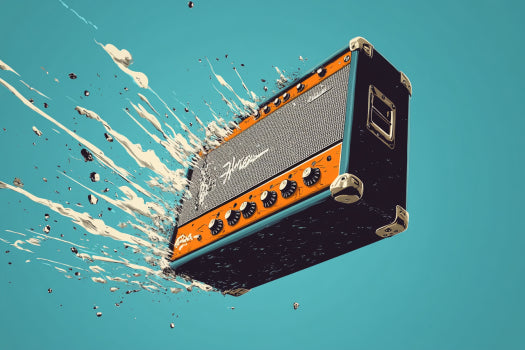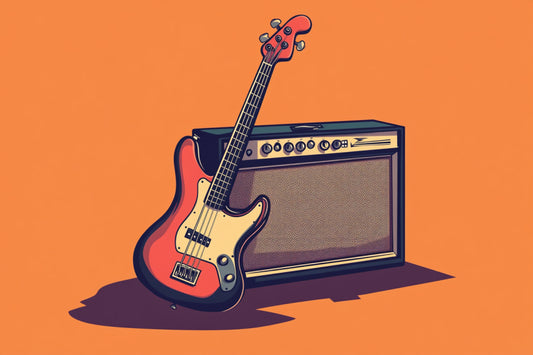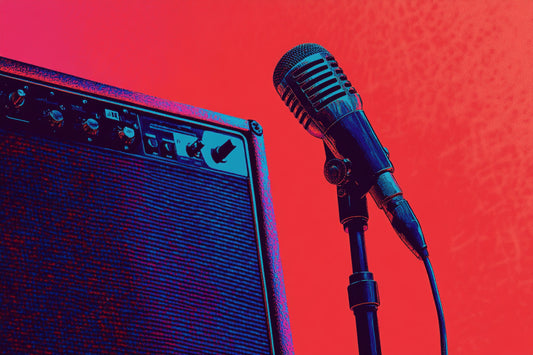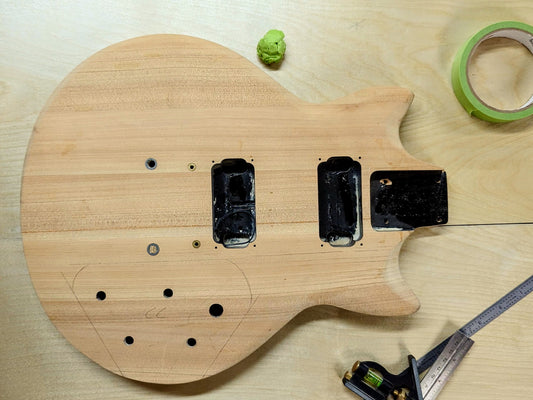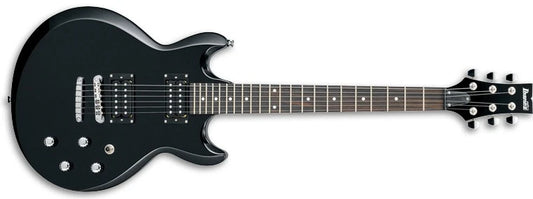
If you’ve ever wondered whether upgrading your 50-watt amplifier to a 100-watt amp will double your volume, you’re not alone. This is a common question among musicians and audiophiles, with a lot of myths and misconceptions floating around. Today, we’re going to clear up the confusion and dive into the science behind amplifier wattage and perceived loudness. Whether you’re a guitarist, bassist, or just someone interested in sound equipment, this article will provide you with the insights you need to make an informed decision about your gear. Let's get loud (but not too loud)!
Understanding Wattage
When we talk about wattage in the context of amplifiers, we’re essentially discussing the amount of power the amp can deliver to the speakers. Wattage is a measure of electrical power, and in amplifiers, it determines how much energy the amp is capable of pushing through to create sound.
In simple terms, higher wattage means more power, which can translate to more volume. However, the relationship between wattage and volume isn’t linear. For instance, while a 100-watt amplifier can deliver twice as much power as a 50-watt amp, it doesn’t necessarily mean it will be twice as loud. We'll get into the details of this below, but it’s essential to understand this distinction to avoid overestimating the impact of wattage on your overall sound.
Moreover, the type of amplifier—whether tube or solid-state—also plays a role in how wattage affects volume. Tube amplifiers are often perceived as louder than their solid-state counterparts at the same wattage. This is due to the way they handle power and produce harmonic distortion, which can make the sound seem richer and more robust.
The Perception of Loudness
When it comes to sound, our ears don’t perceive changes in volume in a straightforward manner. Instead, loudness is measured on a logarithmic scale, specifically in decibels (dB). This means that a small increase in decibels can result in a significant increase in perceived loudness.
To give you an idea, an increase of 10 dB is generally perceived as twice as loud to the human ear. This is important because it directly affects how we perceive the difference between a 50-watt amp and a 100-watt amp.
If you double the wattage from 50 to 100 watts, the increase in decibels isn’t double; it’s actually around 3 dB. This is just a small increase in perceived volume. So, while a 100-watt amp will be louder than a 50-watt amp, it won’t sound twice as loud.

Comparing 50 Watts and 100 Watts
As stated above, an amplifier pushing twice the power will not be twice as loud, because of the logarithmic nature of the decibel scale. Twice as loud would be about 10 dB. Instead, a 100-watt amp would only be about 3 dB louder than a 50-watt amp.
In practical terms, this 3 dB increase is not earth-shattering, but it's still significant. It can be the difference between comfortably hearing yourself over a drummer and just barely cutting through the mix. For guitarists and bassists, this seemingly slight increase can be crucial, especially in live performance settings where every bit of volume helps.
It’s also important to consider that this extra power can give you more headroom. Headroom refers to the amount of volume you can use before your amp starts to distort. More wattage means more clean headroom, allowing you to maintain clarity at higher volumes, which is particularly valuable for genres that rely on clean tones.
Factors Affecting Volume Beyond Wattage
While wattage plays a significant role in determining an amp's potential volume, other factors also contribute to how loud your setup can get. One of the most important is speaker efficiency, often measured in decibels of sound pressure level (SPL) per watt of power at a distance of one meter. Guitar and bass speakers are notoriously inefficient, with a large portion of their power input being dissipated as heat rather than turned into sound. A more efficient speaker can produce more volume with less power.

Anechoic chamber used for speaker testing.
For example, if you have two speakers, one with an efficiency of 95 dB and another with 100 dB, the latter will be noticeably louder at the same wattage. This means that pairing your amp with efficient speakers can significantly impact your overall volume.
Another factor is the placement of your amp. Using an amp stand can elevate your amplifier off the ground, helping to project sound more effectively and making it easier for you to hear yourself in a mix. Remember the best (and loudest) sound will always be at the point where the speaker is aimed!
Environmental factors, such as room size and acoustics, can also affect how sound is perceived. Larger rooms may require more power to fill with sound, while small, acoustically treated spaces might not need as much wattage for the same perceived volume.
Real-World Scenarios and Examples
Let's look at some practical scenarios to see how this knowledge applies to different musicians:
For Guitarists:
- Practice Sessions: A 50-watt amp is more than enough for home practice or small rehearsal spaces. Its volume and headroom are usually sufficient without disturbing the neighbors.
- Live Performances: For small to medium venues, a 50-watt tube amp can still cut through the mix, especially when paired with efficient speakers or mic'd and run through a PA. However, for larger venues or outdoor gigs (particularly when not playing through a PA), upgrading to a 100-watt amp can provide the necessary headroom and ensure you’re heard clearly, especially if you rely on clean tone.
For Bassists:
- Practice and Rehearsals: Bass frequencies require more power to produce the same perceived volume as higher frequencies. A 50-watt bass amp might struggle in some rehearsal situations, making a 100-watt amp a more practical choice even for smaller settings.
- Live Performances: On stage, a 100-watt bass amp offers more headroom and clarity, especially if you play in a band with loud drummers and guitarists. The extra wattage helps maintain a clean, powerful bass tone without distortion.
In Short:
To recap, while a 100-watt amplifier is louder than a 50-watt amp, the difference isn't as dramatic as many might expect—roughly a 3 dB increase in volume. This small boost can be critical in certain situations, providing more headroom and allowing for clearer, undistorted sound at higher volumes, but in other scenarios the power difference may not matter at all.
Factors like speaker efficiency, amp placement, and environment also play crucial roles in how loud your setup sounds. Understanding these elements helps musicians and audiophiles make informed decisions about their gear, ensuring they get the most out of their equipment.
Whether you're a guitarist, bassist, or just love great sound, remember that wattage is just one piece of the puzzle. Explore, experiment, and find the right combination that works for your specific needs and settings. Go make some noise!

